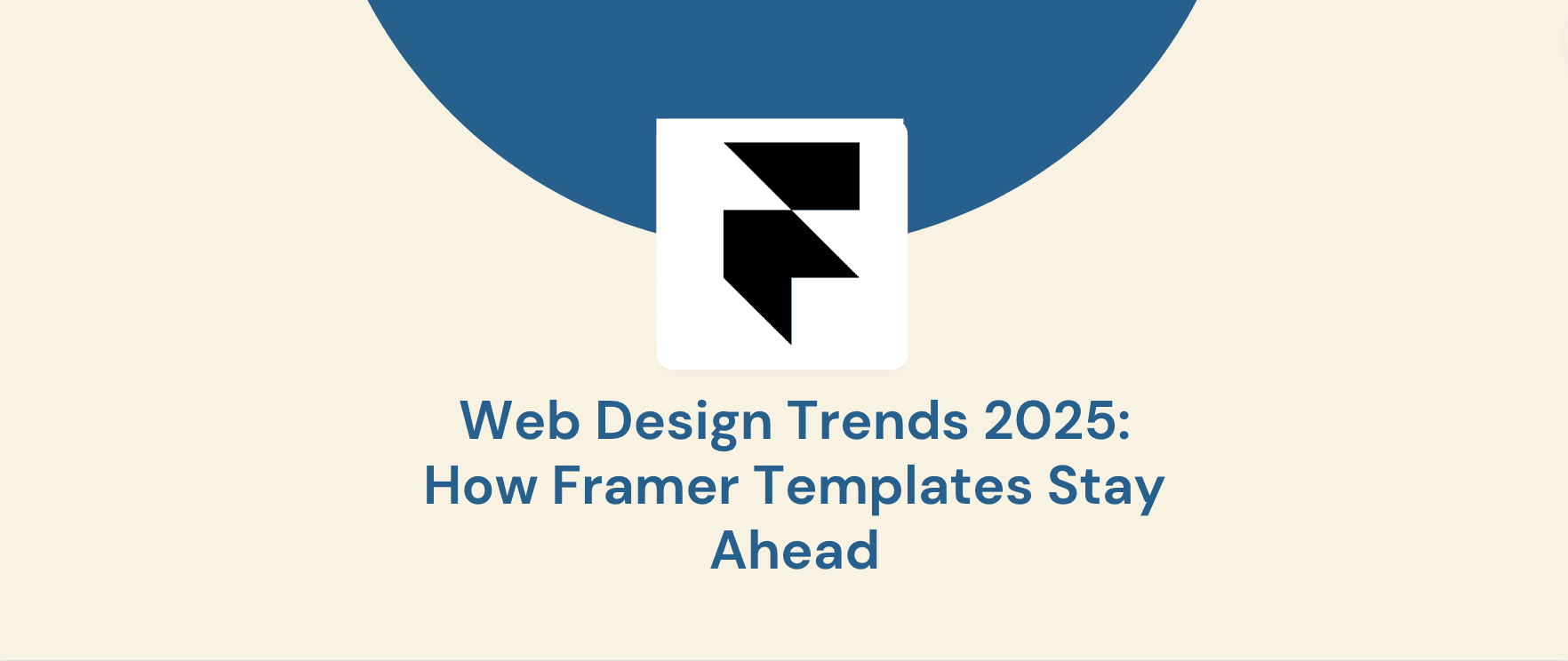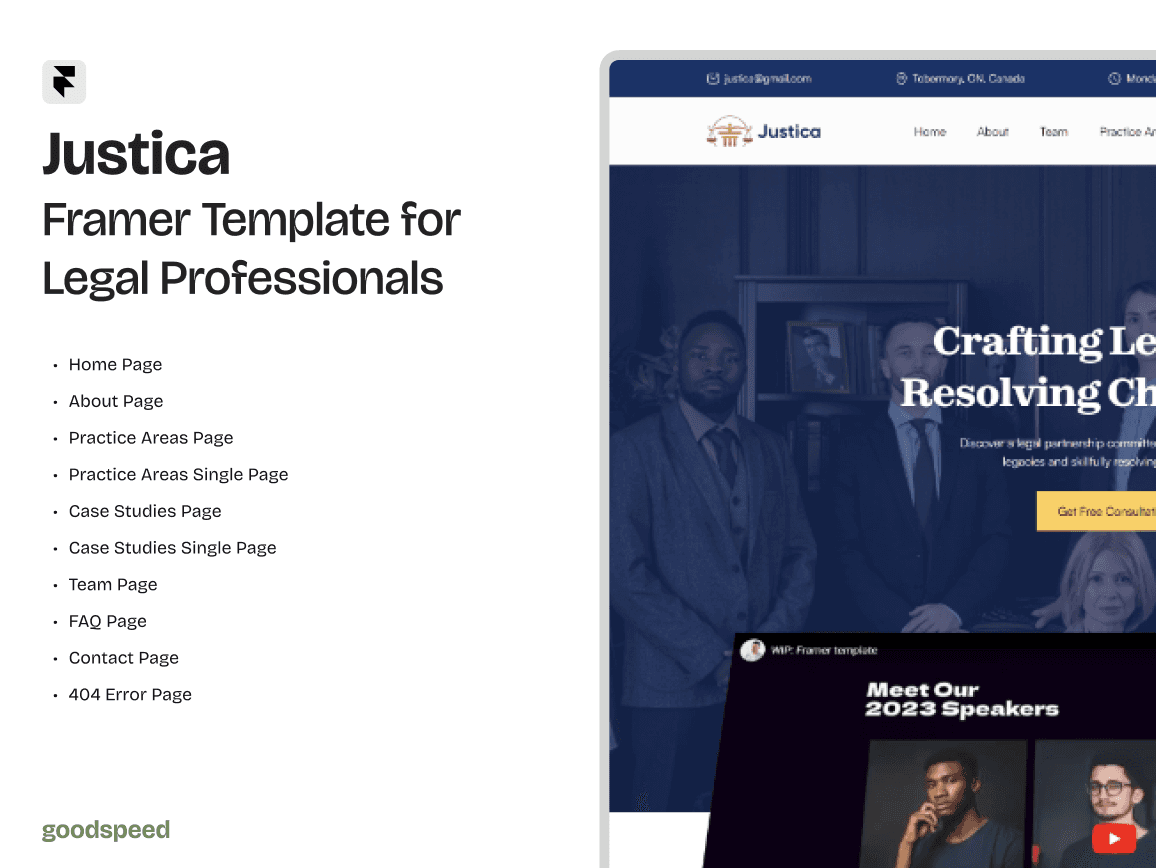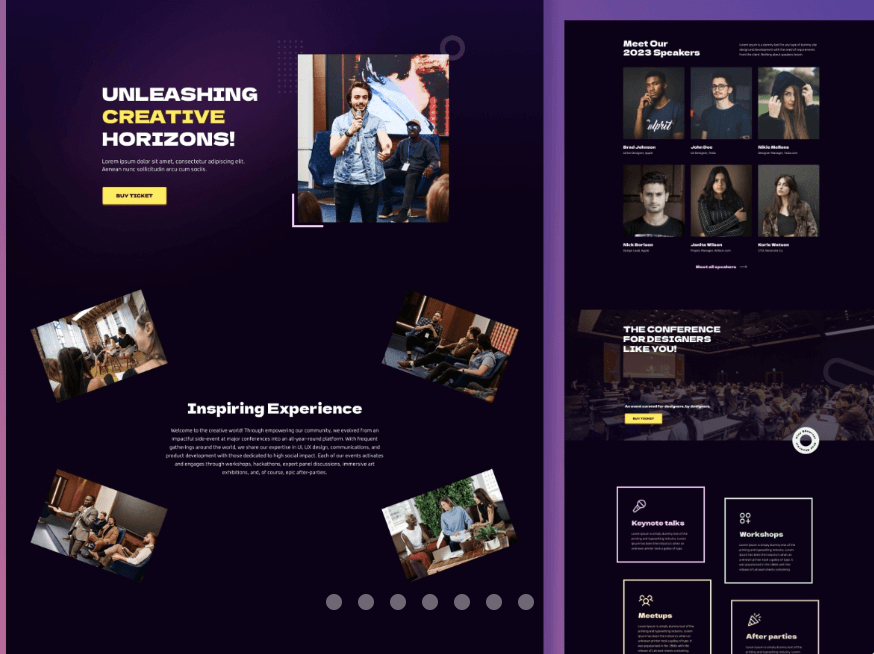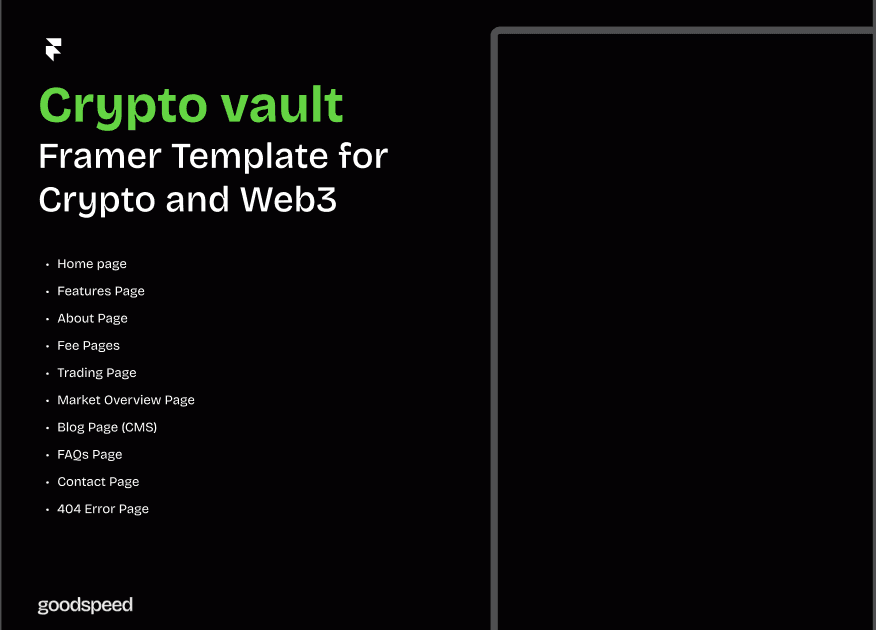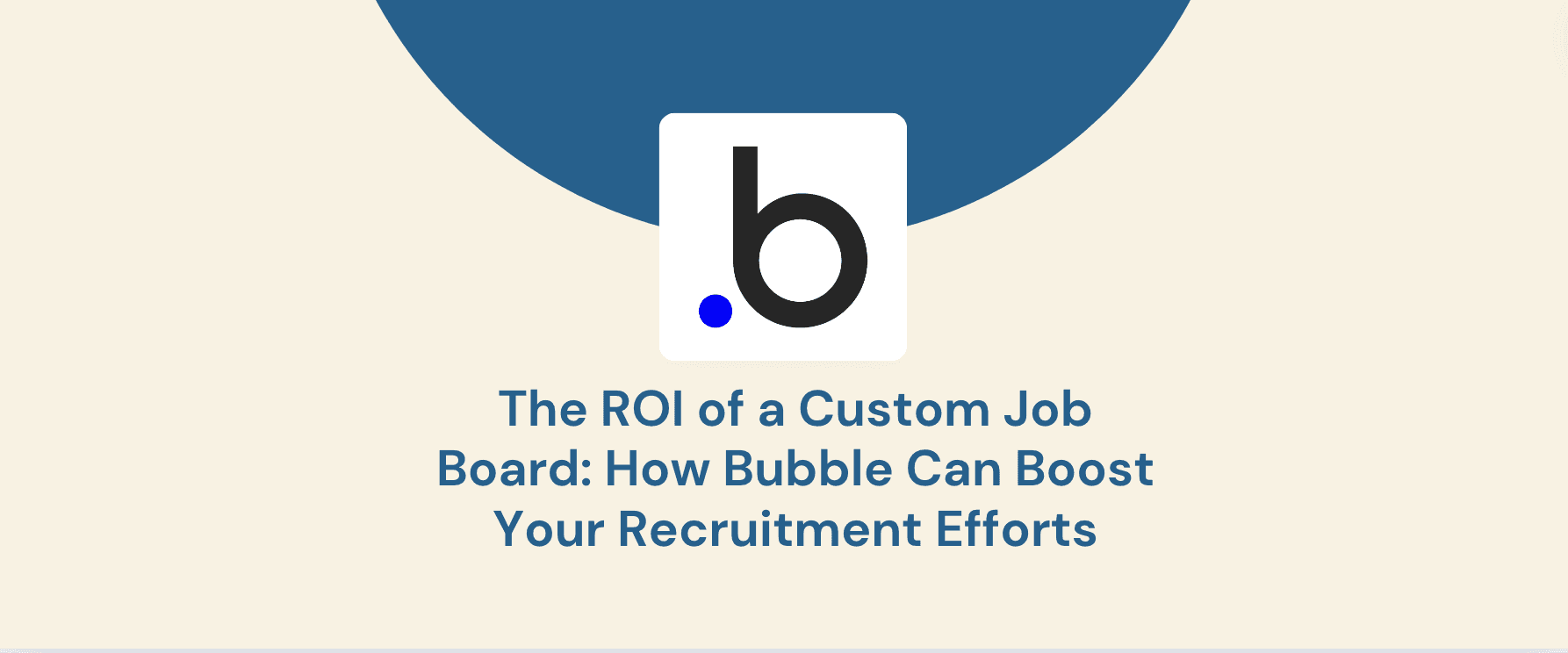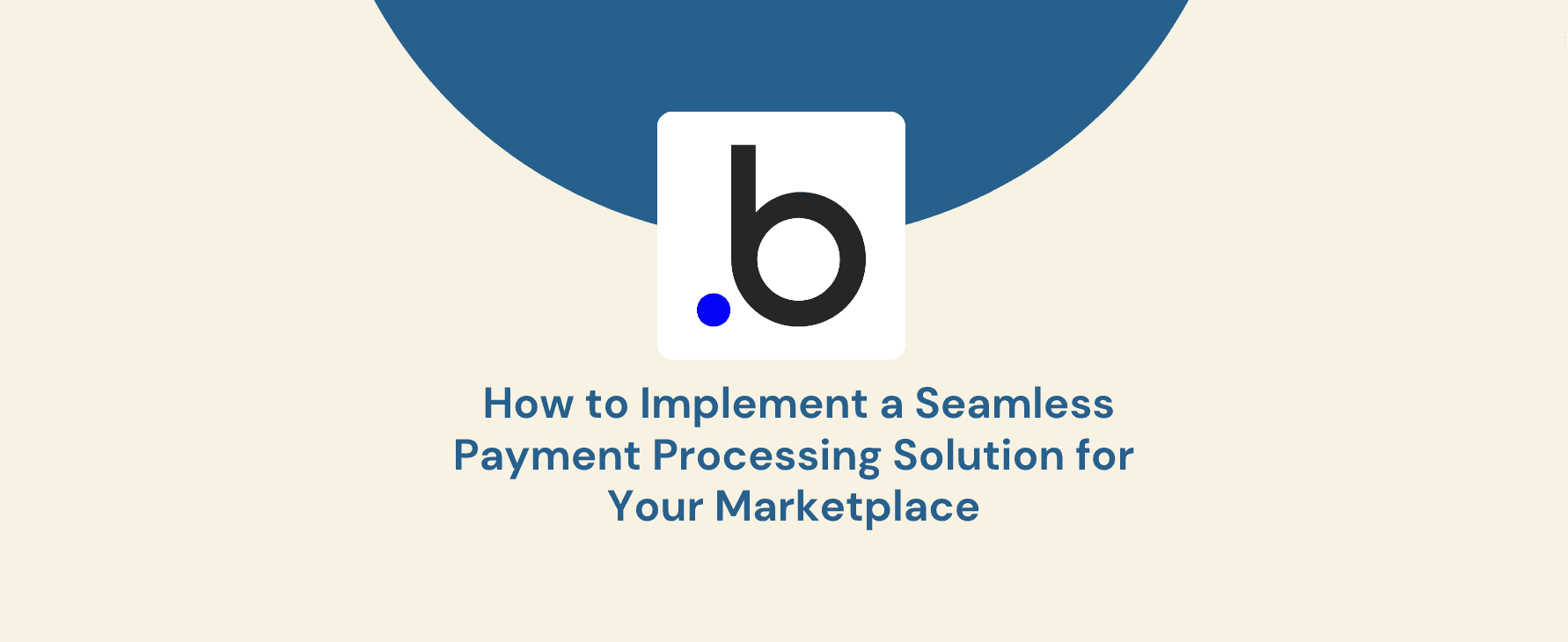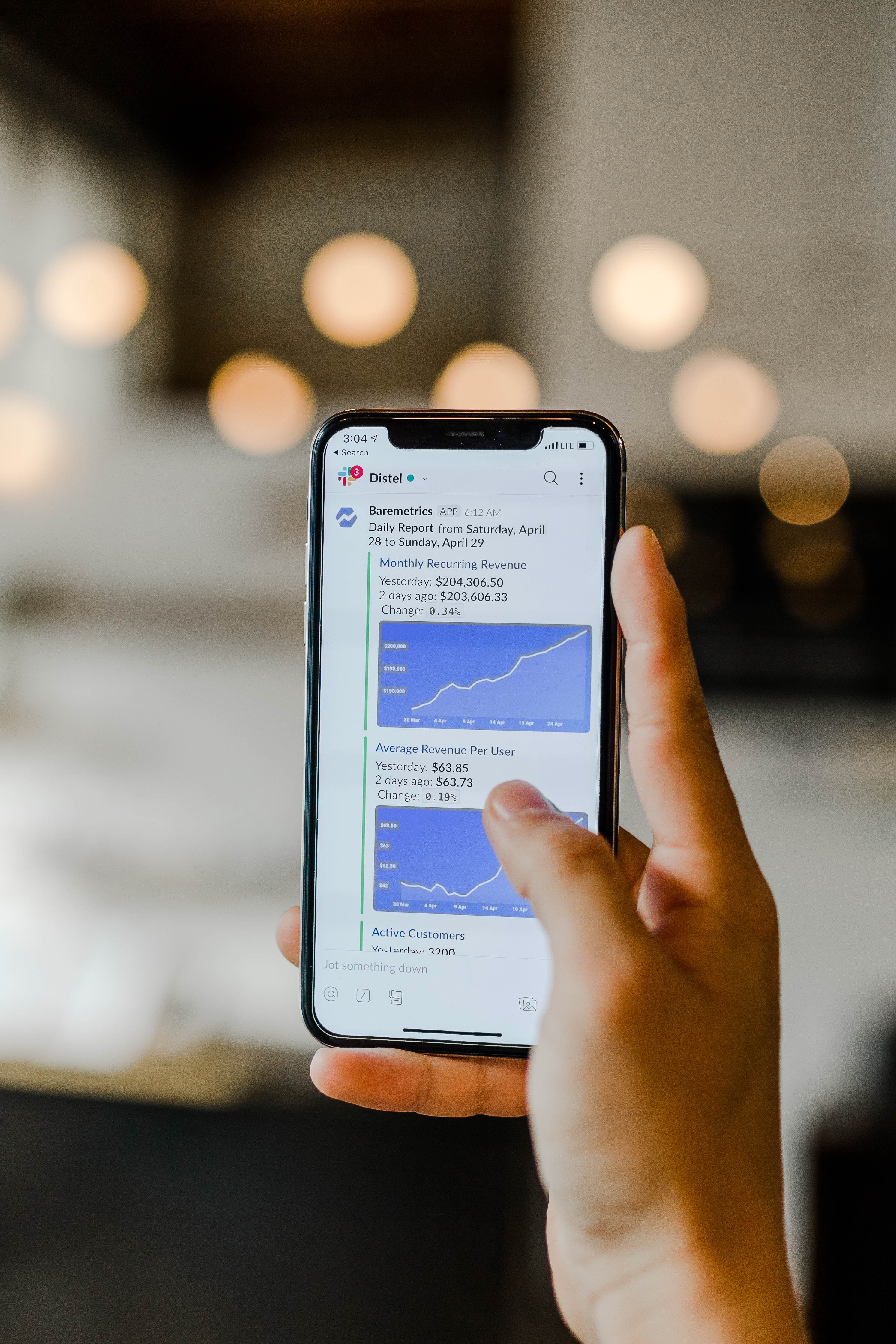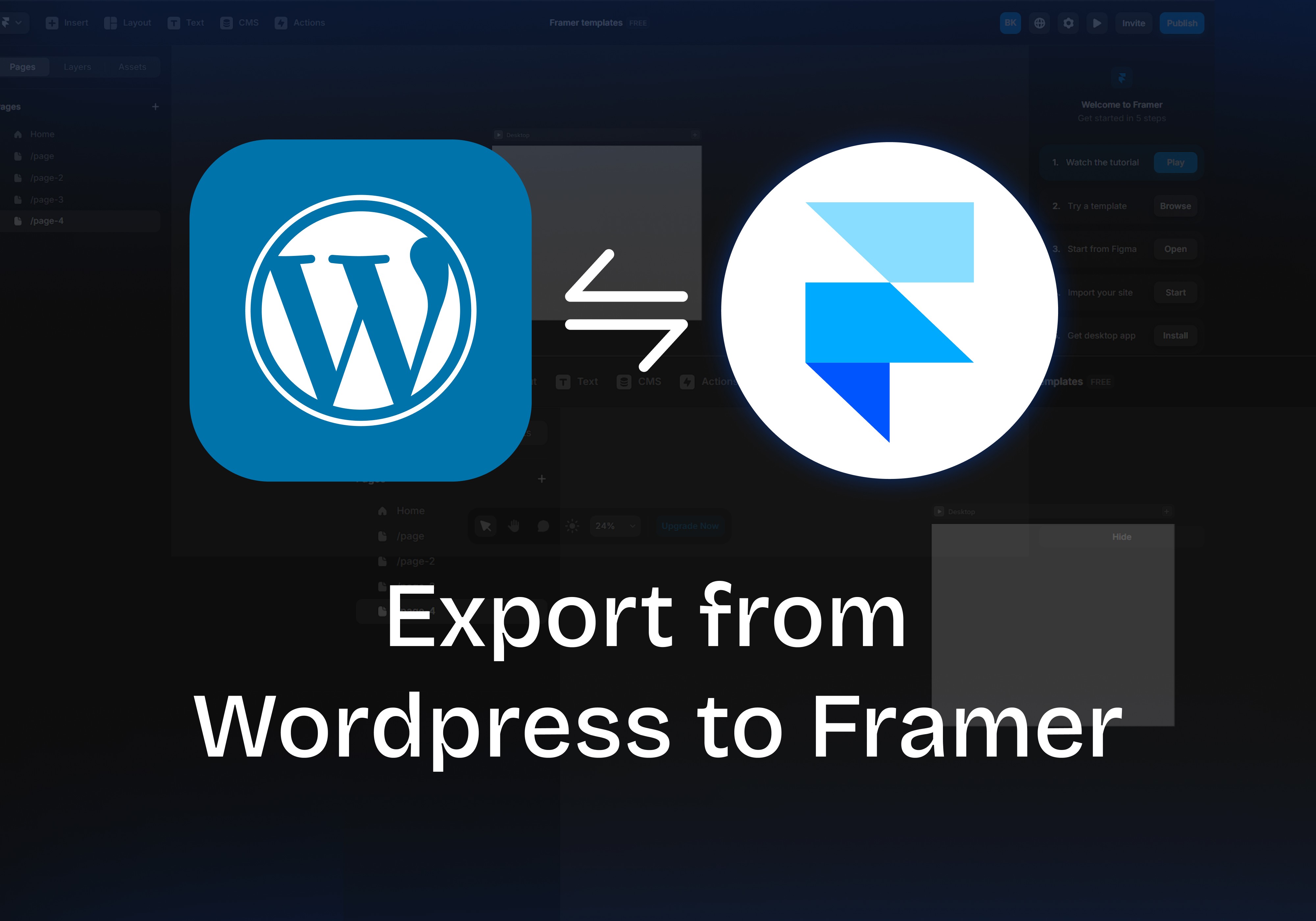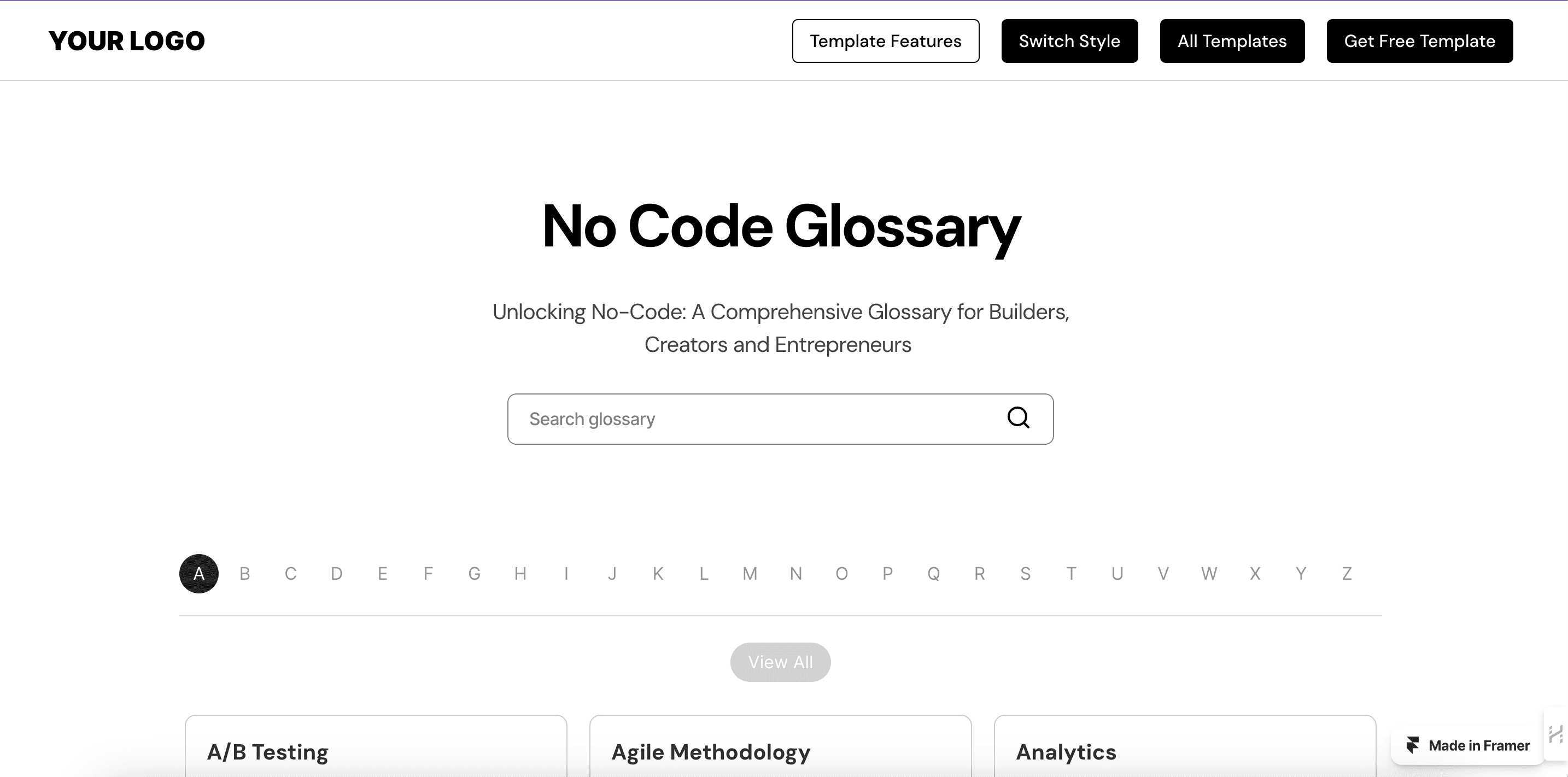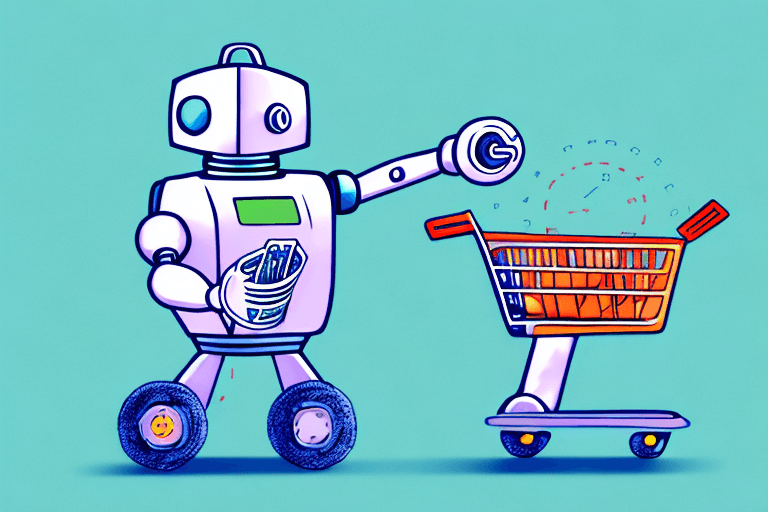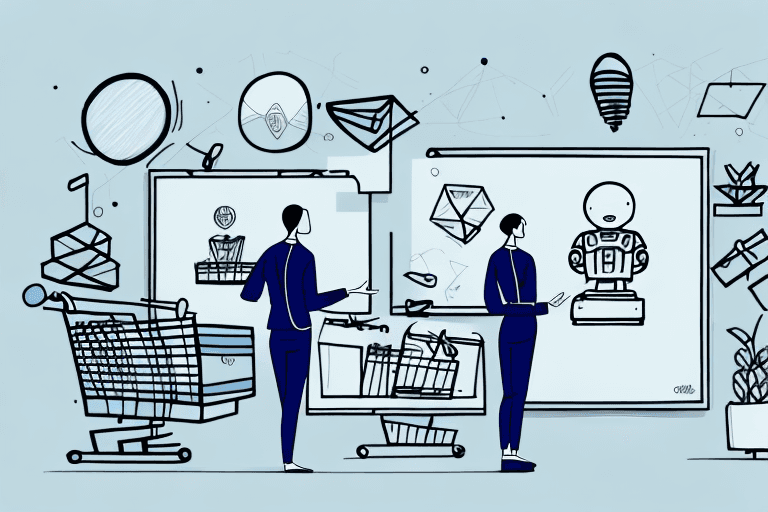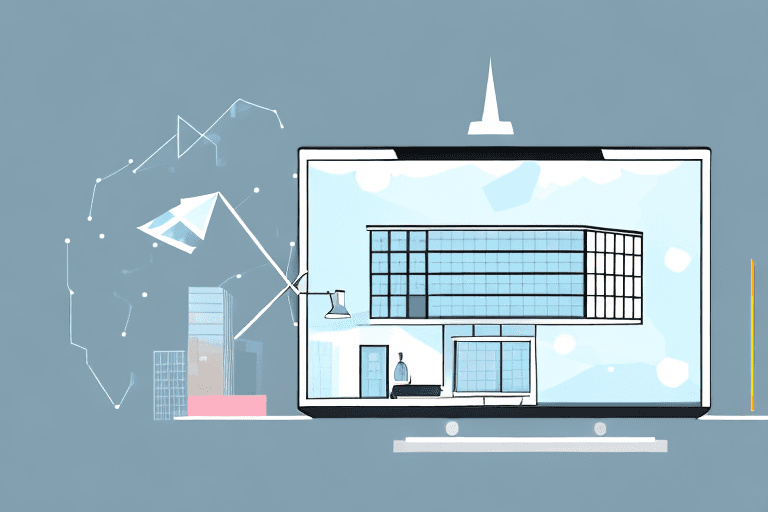As we anticipate the year 2025, certain design principles and technologies are poised to dominate the field. These emerging trends will shape the way websites are designed and experienced. Among these tools, Framer stands out as a powerful and versatile platform for creating interactive and visually appealing websites.
With their ability to streamline the design process, Framer Templates offer a comprehensive set of features that align with the key trends shaping the future of web design. From immersive experiences to AI-powered personalization, Framer Templates provide the tools and flexibility needed to create cutting-edge websites that captivate and engage users.
Key Web Design Trends for 2025
Immersive Experiences:
Virtual and augmented reality (VR/AR) integration: Web design will increasingly incorporate VR and AR elements to create more immersive and engaging experiences.
3D and interactive elements: Three-dimensional visuals and interactive components will become more prevalent, adding depth and interactivity to websites.
Haptic feedback and sensory experiences: Websites may incorporate features that provide tactile or sensory feedback, enhancing user engagement.
Artificial Intelligence (AI) and Machine Learning:
Personalised content and experiences: AI will enable websites to deliver highly personalised content and experiences based on individual user preferences and behaviour.
Predictive design and adaptive layouts: Websites will adapt to different screen sizes and devices, ensuring optimal user experiences across various platforms.
AI-powered design tools and assistants: AI-driven tools will assist designers in tasks such as generating design ideas, optimising layouts, and improving accessibility.
Voice-First Design:
Voice-activated interfaces and commands: Voice-controlled interactions will become more common, allowing users to navigate and interact with websites using their voice.
Conversational design and natural language processing: Websites will incorporate conversational elements and natural language processing to create more human-like interactions.
Accessibility and Inclusivity:
Inclusive design principles: Web designers will prioritise accessibility to ensure that websites are usable by people with disabilities.
WCAG compliance: Websites will adhere to the Web Content Accessibility Guidelines (WCAG) to meet accessibility standards.
Accessibility features and tools: Designers will incorporate features and tools that enhance accessibility, such as screen reader compatibility and keyboard navigation.
Sustainability and Ethical Design:
Eco-friendly design practices: Websites will be designed with sustainability in mind, minimising their environmental impact.
Ethical considerations in web design: Designers will consider ethical implications when creating websites, such as privacy and data protection.
Sustainability-focused design tools and resources: Tools and resources will be available to help designers create more sustainable websites.
How Framer Templates Align with 2025 Trends
Immersive Experiences:
Integration with VR/AR frameworks: Framer Templates can be used to create interactive VR and AR experiences by integrating with popular frameworks like Unity and Unreal Engine.
3D component libraries and prototyping tools: Framer offers a library of 3D components and tools for creating immersive and interactive elements in web designs.
Haptic feedback simulations and sensory interactions: While Framer itself may not provide direct haptic feedback capabilities, it can be integrated with external libraries or APIs to simulate sensory experiences.
AI and Machine Learning:
AI-powered design suggestions and recommendations: Framers can leverage AI to suggest design elements, colour palettes, and layouts based on user preferences and trends.
Adaptive layouts and responsive design features: Framer's responsive design capabilities allow templates to automatically adjust to different screen sizes and devices, ensuring optimal user experiences.
Integration with AI-driven design tools: Framer can be integrated with AI-powered design tools to enhance its capabilities, such as generating design ideas or optimising layouts.
Voice-First Design:
Voice-activated interactions and commands: Framer can be used to create voice-activated interfaces, allowing users to interact with websites using their voice.
Conversational design elements and natural language processing: Framer can incorporate conversational design elements and natural language processing to create more human-like interactions.
Integration with voice assistants and platforms: Framer can be integrated with popular voice assistants like Siri, Google Assistant, and Alexa to enable voice-controlled interactions.
Accessibility and Inclusivity:
Accessible design templates and components: Framer Templates can be designed with accessibility in mind, ensuring that they are usable by people with disabilities.
WCAG compliance features: Framer can incorporate features that help ensure compliance with WCAG standards, such as providing alternative text for images and using appropriate colour contrasts.
Integration with accessibility testing tools: Framer can be integrated with accessibility testing tools to identify and address any accessibility issues.
Sustainability and Ethical Design:
Eco-friendly design resources and guidelines: Framer can provide resources and guidelines for creating eco-friendly web designs, such as optimising image sizes and using sustainable hosting providers.
Ethical considerations in template creation and usage: Framer can promote ethical considerations in web design, such as avoiding discriminatory or harmful content.
Integration with sustainability-focused design tools: Framer can be integrated with tools that help designers create more sustainable websites, such as carbon footprint calculators or energy efficiency analysis tools.
Framer Templates' Unique Advantages
Versatility and Flexibility:
Wide range of templates and components: Framer offers a vast library of templates and components, covering a wide range of design styles and use cases.
Customizable and adaptable to various design styles: Framer Templates can be easily customised to fit different design aesthetics and branding requirements.
Integration with different development frameworks: Framer Templates can be integrated with popular development frameworks like React, Vue, and Angular, allowing for seamless integration into web applications.
Efficiency and Productivity:
Time-saving features and automation: Framer's drag-and-drop interface and pre-built components significantly reduce development time.
Streamlined workflow and collaboration tools: Framer provides features for collaboration, version control, and project management, streamlining the design process.
Rapid prototyping and iteration capabilities: Framer's interactive prototyping features allow designers to quickly iterate on designs and gather feedback.
Innovation and Creativity:
Cutting-edge design features and trends: Framer is constantly updated with new features and design trends, ensuring that users have access to the latest tools and techniques.
Inspiration and creativity-boosting tools: Framer's library of templates and components can inspire designers and spark new ideas.
Encouragement of experimentation and exploration: Framer encourages experimentation and exploration, allowing designers to push the boundaries of web design.
Future Outlook for Framer Templates
As web design continues to evolve, Framer Templates are likely to play an increasingly important role in shaping the future of the industry. Here are some potential developments and trends:
Integration with emerging technologies: Framer Templates may be integrated with emerging technologies such as blockchain, augmented reality, and the metaverse, providing new opportunities for innovative web design.
Enhanced AI and machine learning capabilities: Framer Templates could incorporate more advanced AI and machine learning features, further automating design processes and improving personalization.
Increased focus on sustainability and ethics: Framer Templates may prioritise sustainability and ethical considerations, providing tools and resources to help designers create more responsible websites.
Growing popularity and adoption: As Framer Templates continue to demonstrate their value, they are likely to become even more popular and widely adopted among web designers and developers.
In conclusion, Framer Templates are a powerful tool for achieving 2025 web design trends. Their versatility, efficiency, and ability to adapt to emerging technologies make them a valuable asset for designers seeking to create innovative and engaging websites. As the industry continues to evolve, Framer Templates are well-positioned to remain at the forefront of web design trends.
Ready to harness the power of Framer Templates and create cutting-edge web designs? Contact Goodspeed, a team of Expert Framer Developers who can help you bring your vision to life. Let's collaborate and build exceptional web experiences together!
Frequently Asked Questions (FAQs)
1. Can Framer Templates be used for creating complex web applications?
Yes, Framer Templates can be used to create complex web applications. While they are primarily designed for prototyping and design, they can be integrated with development frameworks and libraries to build fully functional applications.
2. Can I collaborate with others on Framer Templates projects?
Yes, Framer offers collaboration features that allow you to work with other designers and developers on the same project. You can share projects, leave comments, and track changes.
3. Are there any limitations to using Framer Templates for creating mobile-friendly websites?
No, Framer Templates are designed to be responsive and mobile-friendly. You can easily create websites that look and function great on different screen sizes and devices.
4. Can Framer Templates be used for creating animations and microinteractions?
Yes, Framer Templates provide a wide range of tools and features for creating animations and microinteractions. You can easily add motion, transitions, and other effects to your designs to enhance user engagement.
5. How can I ensure that my Framer Templates are accessible to users with disabilities?
Framer Templates can be used to create accessible websites by following best practices for inclusive design. This includes using appropriate colour contrasts, providing alternative text for images, and ensuring keyboard navigation is available.
6. How can I stay updated on the latest Framer Templates features and best practices?
Framer provides documentation, tutorials, and community forums where you can learn about new features, get tips, and connect with other users. You can also follow Framer's social media channels for updates and announcements.

